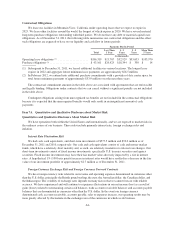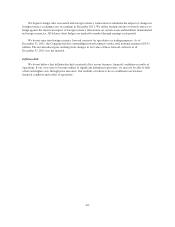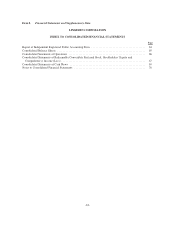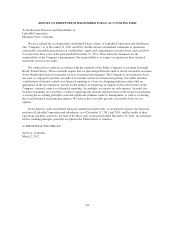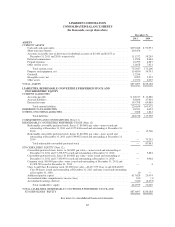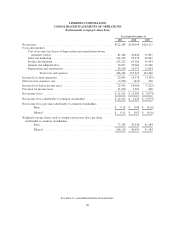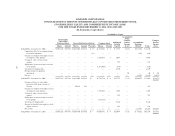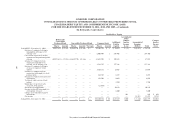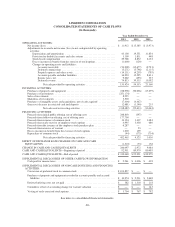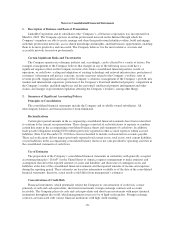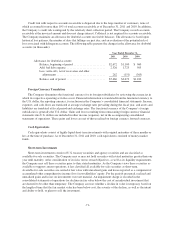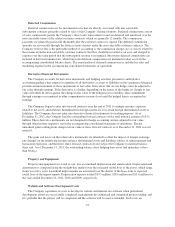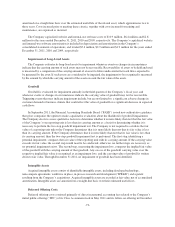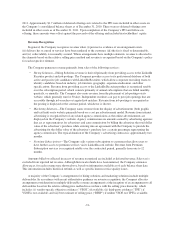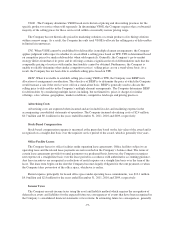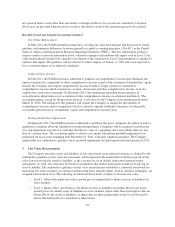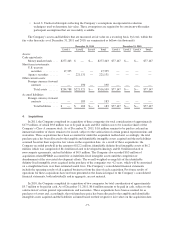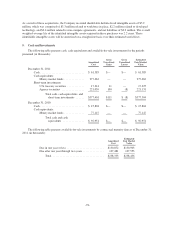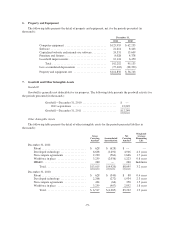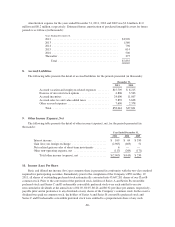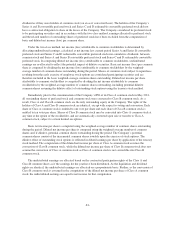LinkedIn 2011 Annual Report Download - page 75
Download and view the complete annual report
Please find page 75 of the 2011 LinkedIn annual report below. You can navigate through the pages in the report by either clicking on the pages listed below, or by using the keyword search tool below to find specific information within the annual report.
Credit risk with respect to accounts receivable is dispersed due to the large number of customers, none of
which accounted for more than 10% of total accounts receivable as of December 31, 2011 and 2010. In addition,
the Company’s credit risk is mitigated by the relatively short collection period. The Company records accounts
receivable at the invoiced amount and does not charge interest. Collateral is not required for accounts receivable.
The Company maintains an allowance for doubtful accounts receivable balances. The allowance is based upon
historical loss patterns, the number of days that billings are past due, and an evaluation of the potential risk of
loss associated with delinquent accounts. The following table presents the changes in the allowance for doubtful
accounts (in thousands):
Year Ended December 31,
2011 2010 2009
Allowance for doubtful accounts:
Balance, beginning of period ...................... $2,672 $1,100 $ 960
Add: bad debt expense ........................... 2,526 1,723 505
Less: write-offs, net of recoveries and other
adjustments.................................. 262 (151) (365)
Balance, end of period ........................... $5,460 $2,672 $1,100
Foreign Currency Translation
The Company determines the functional currency for its foreign subsidiaries by reviewing the currencies in
which its respective operating activities occur. Financial information is translated from the functional currency to
the U.S. dollar, the reporting currency, for inclusion in the Company’s consolidated financial statements. Income,
expenses, and cash flows are translated at average exchange rates prevailing during the fiscal year, and assets and
liabilities are translated at fiscal period end exchange rates. The functional currency of the Company’s foreign
subsidiaries is generally the U.S. dollar. Gains and losses resulting from remeasuring foreign currency financial
statements into U.S. dollars are included in other income (expense), net in the accompanying consolidated
statements of operations. These gains and losses are net of those realized on foreign currency forward contracts.
Cash Equivalents
Cash equivalents consist of highly liquid short-term investments with original maturities of three months or
less at the time of purchase. As of December 31, 2011 and 2010, cash equivalents consisted of money market
funds.
Short-term Investments
Short-term investments consist of U.S. treasury securities and agency securities and are classified as
available-for-sale securities. The Company may or may not hold securities with stated maturities greater than one
year until maturity. After consideration of its risks versus reward objectives, as well as its liquidity requirements,
the Company may sell these securities prior to their stated maturities. As the Company views these securities as
available to support current operations, it has classified all available-for-sale securities as short-term.
Available-for-sale securities are carried at fair value with unrealized gains and losses reported as a component of
accumulated other comprehensive income (loss) in stockholders’ equity. For the periods presented, realized and
unrealized gains and losses on investments were not material. An impairment charge is recorded in the
consolidated statements of operations for declines in fair value below the cost of an individual investment that
are deemed to be other than temporary. The Company assesses whether a decline in value is temporary based on
the length of time that the fair market value has been below cost, the severity of the decline, as well as the intent
and ability to hold, or plans to sell, the investment.
-71-


